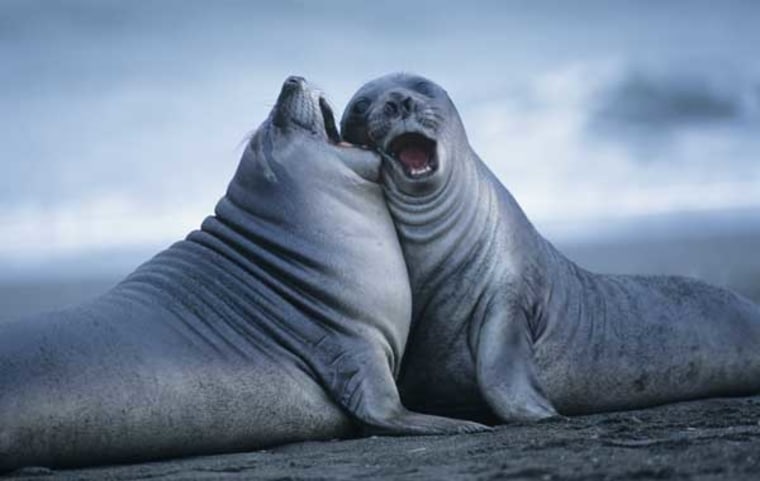Elephant seals traveled surprisingly far when ice retreated from part of the Antarctic mainland about 7,500 years ago, according to a new study.
That wasn't the only surprise. After the enormous animals arrived on the Victoria Land Coast, they multiplied remarkably quickly. And when the ice returned a few thousand years later, the elephant seals high-tailed it out of there.
Some even returned to the island they had originally come from, about 1,500 miles away.
"The results suggest that a highly mobile species like the southern elephant seal may be able to take advantage of emerging habitat resulting from climate change," said Mark de Bruyn, a molecular ecologist at Bangor University in the United Kingdom.
"Of course, other less mobile species may not be able to respond in a similar way, and could be detrimentally affected. This in no way suggests global warming is a good thing."
De Bruyn's study follows on the heels of the discovery, a few years ago, of a large amount of elephant seal hair, skin and even mummies on Antarctica's Victoria Land Coast, which borders the Ross Sea. Today, the region is barren and covered with ice year-round.
De Bruyn wondered if a study of the remains could reveal more details not just about this seal colony but also about the history of climate in the region. After all, elephant seals require open water for breeding, which means that the region's climate used to be very different.
Along with colleagues, de Bruyn dated and analyzed more than 200 samples of mitochondrial DNA, which is passed on only from mothers to their offspring but is more abundant in animal cells than nuclear DNA, which comes from both parents.
The researchers were lucky to be working in Antarctica, where the cold weather helps preserve ancient animal remains.
The results of their analyses, which appeared in the journal PLoS Genetics, helped support previous geological evidence that the region warmed up between 8,000 and 7,500 years ago. When that happened, elephant seals capitalized on the newly opened habitat by migrating 2,500 kilometers (about 1,500 miles) to the Victoria Land Coast from their nearest breeding site on Macquarie Island, where the animals still live today.
As soon as they settled in, the elephant seals made themselves at home. A high amount of genetic diversity in the now-extinct population showed that the population grew rapidly in just a few generations.
Then, about 1,000 years ago, when the ice returned, the seals abandoned the site. Some actually returned to the source of their ancestors on Macquarie Island.
"This tells us that populations can respond to changes in the environment over pretty short periods of time," said Simon Ho, an evolutionary biologist at The Australian National University in Canberra. "This is something we can bear in mind with climate change occurring over the next 100 years."
There is some sense of reassurance in the new study's results, Ho added. Seven thousand years is a small amount of time in the grand scheme of evolution, he said. It's encouraging that elephant seals were able to adapt that quickly to extreme changes in the environment around them.
Despite the potential positives, de Bruyn warned, this population did ultimately disappear when the climate cooled off again. Less mobile species will have a tougher time with future warming. And, in a case like this, it's hard to know whether the past predicts the future.
"We're talking about natural processes here," de Bruyn said, "not the extremely rapid climate change related to human activities, which is likely to be largely detrimental to many or most species."
